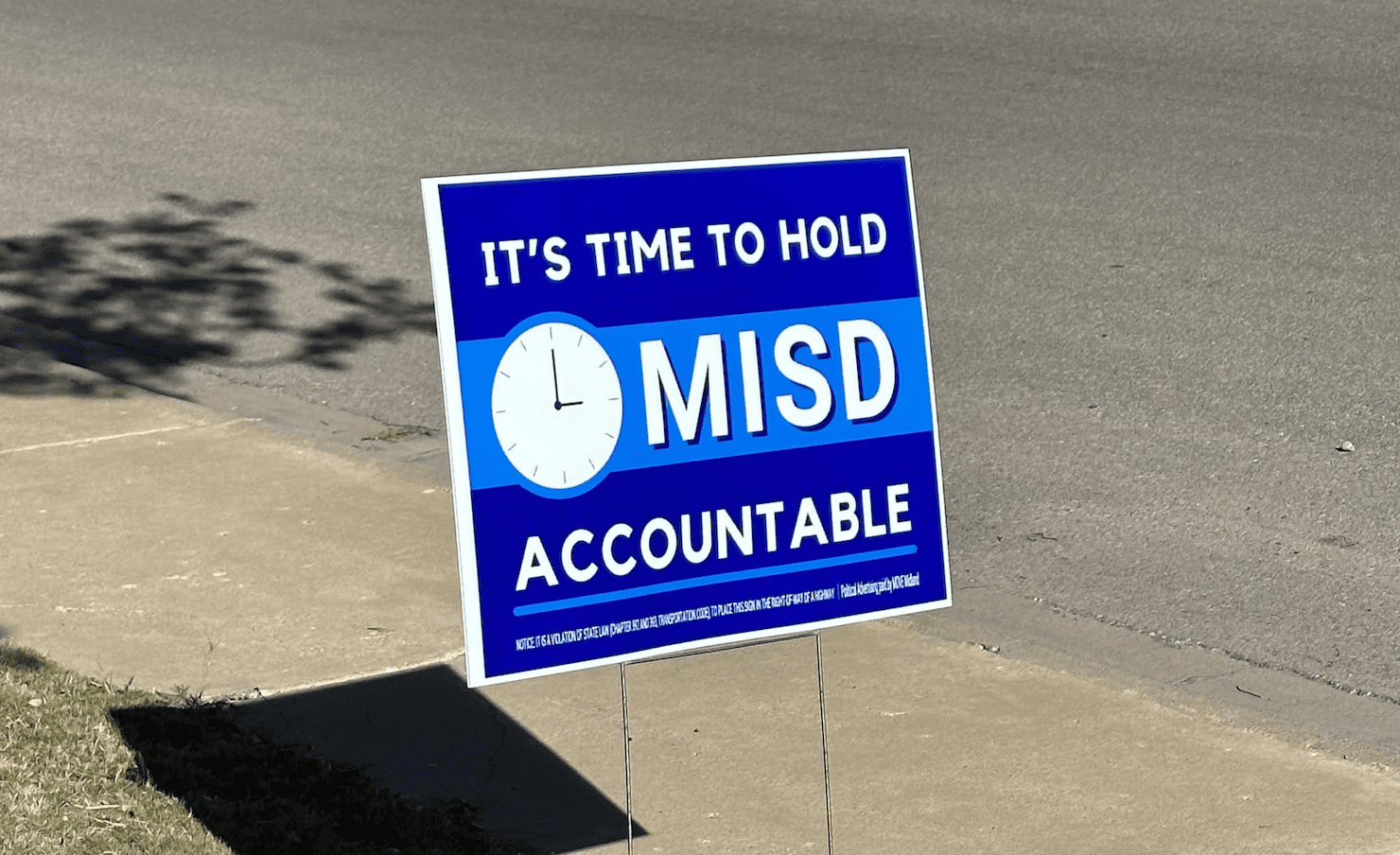Midland Independent School District residents are questioning the size and scope of a $1.4 billion bond proposition that school officials placed on the November ballot—by far the largest single bond ever proposed by the district.
With interest, the bond would cost local property taxpayers $2.9 billion—more than double the dollar amount shown on the ballot.
Midland ISD officials want taxpayers to fund two new high schools to replace existing schools; a new elementary school; and improvements to multiple facilities. The bond also includes security upgrades.
All the projects are packed into a single all-or-nothing ballot proposition.
Former Midland mayor Mike Canon is one of the residents asking questions—not only about the “absolutely staggering amount” of the bond and whether some projects are “wants” versus “needs,” but also what impact the spending will have on students’ educational performance.
“The ‘elephant in the room’ is the question of whether any of these expenditures will do anything to educate our kids any better than they have been over the past decade,” Canon said in an opinion piece published by the Midland Reporter-Telegram.
State data shows Midland ISD’s K-3 students falling behind in reading and math in 2023 compared to last year. In 2022, only 42 percent of MISD students met or exceeded grade level across all subjects.
“Giving the bond without having a sound academic turnaround plan is not the fiscally responsible thing to do,” said Rachel Walker, president of a nonprofit called MOVE Midland.
The group believes Midland ISD can fund needed growth in a way that holds the district more accountable for students’ performance and taxpayers’ money.
“Given MISD’s current track record of low ratings and failing schools, do you trust MISD to utilize your investment well?” the organization’s website asks.
Canon also said the district is being deceptive about the tax impact of the bond.
Midland ISD’s bond promotion materials state that passing the bond will not result in a tax rate increase. Whether or not the bond passes, the district’s 2023-24 tax rate will be 88 cents per $100 valuation—3 cents lower than the 2022-23 rate of 91 cents.
This year, the state legislature passed property tax relief requiring all school districts to significantly lower the portion of their tax rate used to fund maintenance and operating expenses (M&O).
In September, Midland ISD reduced its M&O rate by 18 cents, from 84 to 66 cents.
At the same time, however, the school board increased its debt repayment tax rate (I&S) to 22 cents. When the board voted in August to place the bond on the ballot, the I&S rate was just 7 cents.
By swapping most of the mandated M&O rate reduction to I&S just ahead of the bond vote, the district recaptured 15 cents of property tax relief intended for Texas families and business owners yet was still able to claim a 3-cent rate decrease.
Whether or not the tax rate changes when a bond first passes, the local tax liability is increased; thus, every bond is a property tax increase.
Texas law requires school districts to highlight the tax impact by including language on the ballot stating “THIS IS A PROPERTY TAX INCREASE.”
Midland ISD property taxpayers currently owe $174 million in previously approved bond debt principal and interest, according to the district’s Voter Information Document.
“For me, the bottom line is that there are just too many unanswered questions about this bond proposal and the current state of MISD,” said Canon. “I am voting ‘no’ on this proposal.”
Midland ISD is among dozens of Texas school districts with bonds on the November ballot that would add billions to the bond debt already owed by local property taxpayers.
A few school districts are proposing both bonds and tax rate increases that require voter approval.
All Texans’ ballots will include 14 proposed amendments to the state constitution as well.
Election Day is Tuesday, November 7.





